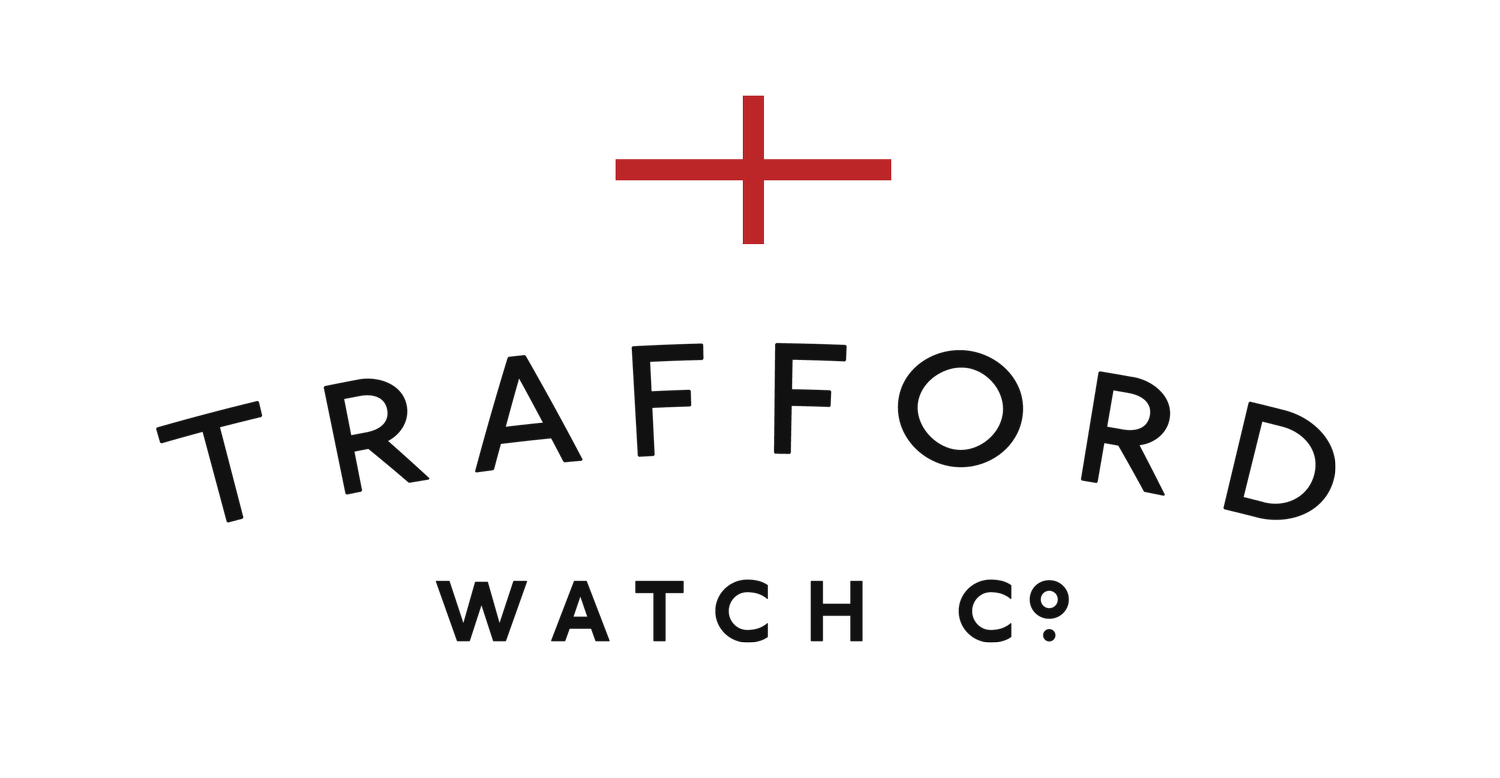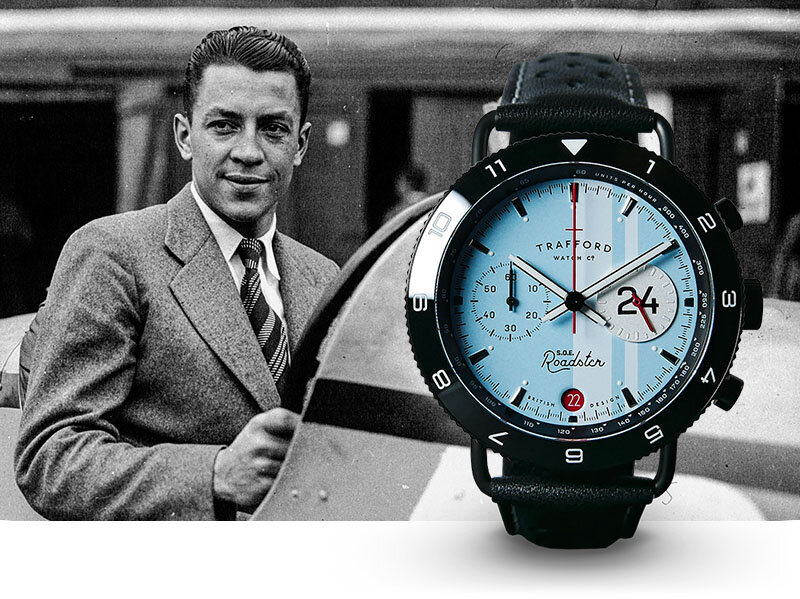
S.O.E. Roadster
Adrenaline, espionage and camraderie come together to form the incredible true story that inspires this homage to the heroes of motorsport and war.
Rivals on the Track
In the 1920s and 30s, racing was extremely popular. In France, it was a major part of society, and the drivers were bona fide celebrities with connections to the rich and powerful all across the country. This is where our story begins, with three legends who became heroes both on and off the race track.
The Drivers
William Grover-Williams
Born to a British father and a French mother, William Grover-Williams became well known for both his ability to outsmart his rivals, and also for his preferred British Racing Green cars. The most successful British Grand Prix racing driver of the 1920s, he won many races, most notably the inaugural Monaco Grand Prix in 1929. After the war started, he immediately went to England and was recruited into the S.O.E. After intense spy training and parachuting into France, Grover-Williams worked in the Paris region to build up a successful circuit of operatives, forming sabotage cells and reception committees for parachute operations. He would recruit both Benoist and Wimille to help the cause. In 1943, he was captured by the Gestapo, questioned, tortured and shipped off to the Sachsenhausen concentration camp, where he remained for 2 years. He was executed just 3 weeks before the war ended, though there is a good amount of evidence that he actually survived, changed his identity and went back to work with the British government for many more years.
Jean-Pierre Wimille
Born Parisian to wealthy parents, Jean-Pierre Wimille took the racing world by storm at a very young age, winning many races in his preferred French Racing Blue. His biggest achievement was winning the 24 Hours of Le Mans twice—once with Benoist in 1937 and once with Veyron in 1939. During the war he was recruited by Grover-Williams and was instrumental in expanding the network of fighters. Even against impossible odds, he escaped multiple German captures and survived the war. He raced again after the war, and was extremely successful for several years. In 1949, while practicing for the Buenos Aires race, his car went off the road and struck a tree. He died soon after.
Robert Benoist
A man of adventure, Robert Benoist was a fighter pilot for the French Air Force during WWI before ever becoming a race car driver. Known for his matching jet black hair and black leather jacket, Robert was a superstar of the time, and capped off his racing career with a win at the 24 Hours of Le Mans in 1937. During the war, Benoist was eager to fight the Germans, and so jumped at the chance when Grover-Williams asked him to be his right hand man. He had several arrests and near misses with the Germans, once flinging himself out of a moving car while being detained, finding some new clothes, and escaping across rooftops while avoiding German bullets. In June of 1944, he was finally caught and arrested by the Gestapo, and sent to Büchenwald concentration camp. He was executed 3 months later.

The Bugatti Type 35
A legend of race, and the visual inspiration for the S.O.E. Roadster, the Bugatti Type 35 is written into history as one of the most successful race cars of all time, securing over 2,000 victories between 1924 and 1930. The Type 35 was a technical masterpiece, with the company’s founder, Ettore Bugatti, able to dramatically reduce the weight of the vehicle while increasing the power and reliability.
Design Inspiration
Wire Lugs
The unique wire lugs of the S.O.E. Roadster blends utility with beauty, mirroring the exposed mechanics and pipes against the beautifully styled body found on the Bugatti Type 35.
24 Hour Dial
From a practical standpoint, the 24 disc on the S.O.E. Roadster is a 24 hour dial. The raised indices mark the hours. In design, the large number and circle nod to the numerical designs you would often find painted on the side of race cars. There is also a conceptual side, in which the number 24 is also giving a tip of the hat to the 24 Hours of Le Mans race that both Benoist and Wimille won (while Williams did not win it himself, he was a part of the extended Bugatti team during those winning years).
Red Date
The design inspiration for the red date wheel comes from the common practice of drivers using colored tape to mark important points on their dials. For example, they may have placed a red marker at a dangerous speed or fuel level.
Colors
The colors are pulled directly from the colors of the cars that the three men drove. Grover-Williams was famous for his British Racing Green, while Wimille preferred his native French Racing Blue. Benoist drove several colors over his career, including the black that matched his jet black hair and jacket that he was known for.

From Racing Celebrities to War Heroes
September 1, 1939. As war overtook Europe, life changed for entire generations. The races ground to a halt, while the men who had become famous for risking their lives behind the wheel sought adventure in different avenues.
“Set Europe Ablaze”
In July of 1940, just after France officially became occupied by Nazi Germany, the Special Operations Executive (S.O.E.) was formed in secret by the British Government. Although Winston Churchill officially had nothing to do with the group, they became known as “Churchill’s Secret Army”, and he was said to have tasked the group with, “Setting Europe ablaze.” In other words, the main function of the S.O.E. was to cause chaos within Nazi occupied regions, by way of sabotaging military operations, stealing intelligence, and creating networks of resistance fighters to be called upon at a moments notice.
As a British national, William Grover-Williams was the first to jump at the chance to join this group. He would then go on to recruit his racing rivals Robert Benoist and Jean-Pierre Wimille to the cause. The men’s background in race provided a unique skill set that made them perfect for the S.O.E. Their penchant for living life on the edge was already well documented, while their vast connections with high society made them very valuable conduits for the networks of the French Resistance.
Chronograph & Rotating Bezel
This watch features both a chronograph and a rotating bezel. Chronographs are considered synonymous with racing, and were heavily used by the pit crew or race officials. But most drivers actually preferred the functionality of the rotating bezel, which could easily be used to mark lap times or roughly how much fuel they have left An added use that was specific to our S.O.E. operatives is the ability to use the rotating bezel as a second time zone. They would often need to know what time it was back in England in order to coordinate air drops or other operations.
Light Up the Sky
One of the most important jobs carried out by the S.O.E. operatives was to coordinate night drops of arms and supplies. This was incredibly dangerous and could only be completed at night. Pilots would only fly under clear skies and a full moon because drop points would be around natural landmarks, such as lakes. The moonlight would reflect off the water below, letting the pilot know where to drop. The S.O.E. Roadster uses best in class Super-LumiNova lume to make sure that nighttime visibility is never an issue.
Modern Machines
The cars that our heroes drove, along with the tools of espionage they used were fantastic machines that today fill us with nostalgia, coming from a time where moving parts did the work, not chips and microprocessors. The movement within the S.O.E. Roadster is a VK64 mecaquartz. This is a very unique movement that combines the accuracy of modern quartz movements with the mechanical ‘clunk’ of old school chronographs. It is truly a marvel of engineering.
Specs
Dimensions
Diameter: 41mm
Diameter + Crown: 43mm
Lug to Lug: 48mm
Thickness: 11.8mm
Thickness + Crystal: 12.7mm
Strap Width: 20mm
Elements
Water Resistance: 10 ATM
Material: 316L Stainless steel, with black PVD option
Case Back: Screw down, with custom artwork
Case Finishing: Combination of blasted and polished
Crystal: Domed sapphire with AR coating
Movement: Seiko VK64 mecaquartz
Bezel: Uni-directional, 120 click, ceramic, fully lumed with Swiss Super-LumiNova C3 Green
Hands: Fully custom, Swiss Super-LumiNova BGW9 Blue
Dial: Combination glossy with matte stripes, placed chrome indices, lume hour markings with Swiss Super-LumiNova C3 Green, raised 24 hour dial with raised markings, custom date wheel, angled steel tachymeter ring
Strap
Style: Rally style, 3 color options
Material: full-grain leather
Size: 20mm width at connection point. Quick-release pins
Buckle: Stainless steel or black PVD, signed
What’s in the Box?
One S.O.E. Roadster watch
One matching NATO strap
One book, detailing the life of the selected driver
One microfiber cleaning cloth
One Trafford Watch Co. sticker
One authentication card

Inspiring Adventures
William Grover-Williams, Robert Benoist and Jean-Pierre Wimille helped to turn the tide of the war. Their stories are filled with cunning operations, near-death escapes, and legendary heroism. Each watch is devoted to a racer, and includes a special book that details the life and adventures specific to them.
Every time you wear the S.O.E. Roadster, it should serve as a reminder that heroism lies within, and to treat each day as an opportunity to do the right thing.




























